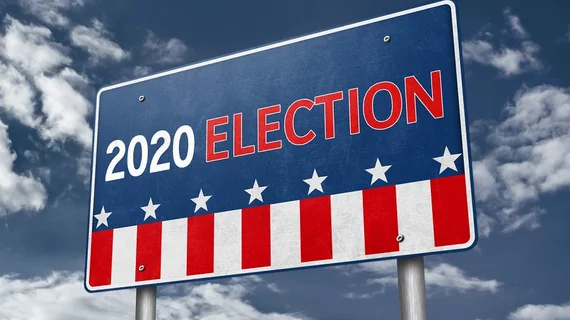Biden-Trump presidential election linked to a higher heart attack risk among white, male and older individuals
Acute myocardial infarctions (AMI) were much more common immediately after the 2020 U.S. presidential election between Joe Biden and Donald Trump, according to new findings published in JAMA Network Open.[1]
“Prior studies have found a higher risk of acute cardiovascular disease (CVD) events immediately following behavioral, psychosocial, and environmental triggers,” wrote first author Matthew T. Mefford, PhD, of the department of research and evaluation at Kaiser Permanente Southern California in Pasadena, and colleagues. “However, less is known about the effect of political events such as presidential elections on acute CVD risk.”
Mefford’s team tracked data from more than 6.3 million adults who belong to one of two large health systems in California. While 62.1% of patients were 18 to 54 years old at the time, another 29.6% were 55 to 74 and 8.3% were 75 or older. A majority (41.3%) of patients were white, and 53.5% were female.
The election occurred on Nov. 3, 2020, and Biden won. Hospitalizations were tracked during the five days following the election and a five-day period two weeks before the election.
Overall, hospitalizations for CVD were up 17% during the five days immediately after the election compared the five-day stretch weeks before the election. The AMI rate increased by a whopping 42%. There was no significant change in the reported rates of heart failure or stroke.
CVD hospitalization rates increased the most after the election among adults who were 75 years or older, men and white. These findings, the authors wrote, “require more investigation.”
“Biologically, CVD risk is high among older adults, but this may not explain the transiently higher risk following the election,” they wrote. “Men are both less likely than women to report physical or emotional symptoms of stress and to take fewer actions in managing their stress levels. Although political affiliation was not examined, we can only speculate the reasons behind the larger impact on older adults, men, and white individuals.”
The team also performed a separate analysis that excluded anyone who may have had their health affected by a COVID-19 diagnosis, noting that this “did not substantially change” its findings.
“There is a need for awareness of this higher risk of CVD, and further research is warranted to identify strategies that mitigate cardiovascular risk during notable political events,” the group concluded.
Related Acute Coronary Syndromes Content:
Mental illness strongly linked with higher CVD mortality
Deaths from MI, stroke and pulmonary embolism are down among kidney patients receiving dialysis
Is PCI without stenting safe for low-risk STEMI patients?
VIDEO: Vaccines boosted survival among STEMI patients with COVID-19
PCI vs. CABG for left main disease: Key takeaways from a new meta-analysis
Reference:

